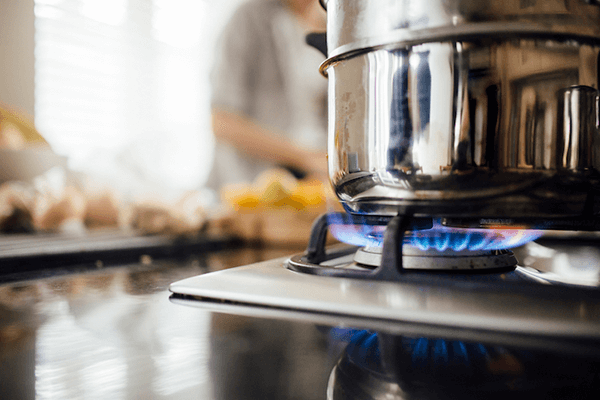6 Ways to Go Green in your Kitchen
Your kitchen can generate the most waste of any room in your home. Between energy-guzzling appliances to your family’s trash output, your kitchen can grow a big carbon footprint.
There are many ways to make your kitchen more eco-friendly and more economic for your energy bills. From using energy-efficient appliances to upgrading your electricity, here’s how you can go green in your kitchen and save yourself some green, too.

Use Energy Efficient Appliances
If you’ve got older kitchen appliances, chances are they use a lot of energy to get the job done.
Most dishwashers built before 1994 waste more than 10 gallons of water per cycle. And more than 60 million refrigerators in the United States are over 10 years old, which costs homeowners nearly $4.4 billion a year in energy costs.
Upgrading your kitchen appliances to energy-efficient models can be the key to decreasing your kitchen’s energy output and saving you money on electricity bills.
When shopping for energy-saving kitchen appliances like a new stove, refrigerator, freezer or dishwasher, look for the ENERGY STAR rating. This will help you choose appliances that save water and energy.
Plus, many ENERGY STAR appliances come with rebates that help you save even more money.
When you do trade out your old appliances for energy-efficient models, be sure to list them on Freecycle or Craigslist before sending them to the dump.
Use Smaller Appliances
How you cook your meals can make a big difference in the size of your kitchen’s carbon footprint.
Instead of using your full-size oven to cook small dishes, you can save energy by switching to a toaster oven, microwave, or slow cooker.
You can use 80% less energy by using a microwave instead of a conventional oven, while a pressure cooker uses about 70% less energy.
Plus, when you’re cooking in the summer, a microwave brings much less heat into your kitchen than your stove does. This can help you keep your cooling bills down, too.
If you’re planning a large meal for friends or family, using your oven may be unavoidable. Just be sure to keep the oven door shut as much as possible while you’re cooking — every time you open the door, nearly a quarter of the heat escapes.
Learn how to reduce the carbon footprint of your entire home.
Be Stove-Smart
When you’re cooking on the stove, using a pot that fits the burner can keep you from wasting energy — a 6-inch pot on an 8-inch burner wastes more than 40% of your burner’s heat.
And make sure to always use a lid — cooking without a lid on your pot can use up to three times more energy.
Electric stoves are generally a healthier option than gas stoves — gas stoves can emit up to 39% more NO2 and CO to the air in your house.
But if you love cooking with a gas stove, the lower the stove’s BTU output is, the more energy-efficient your stove will be.
Breathe easier by improving the indoor air quality of your home.
Invest in Quality Cookware
Buying quality, durable cookware can help reduce your kitchen’s waste output and save you money.
Instead of buying plastic cooking spoons that melt or cheap wooden spoons that rot, invest in sturdy cooking utensils that you won’t have to replace every year.
Buy a knife sharpener to sharpen your knives by hand when they get dull, rather than replacing them. And when properly taken care of, a cast iron skillet can last for decades.
How you store your food can help make a difference too. Rather than using plastic sandwich bags to store leftovers and lunches, invest in one set of Tupperware that can be reused over and over.
Compost Organic Waste
Most American families create 650 pounds of compostable materials every year, and over 60% of waste in landfills is compostable, organic matter.
By composting your home’s organic waste, you can help reduce the nation’s methane emissions and enrich the soil in your lawn and garden. Plus, composting saves you money on garbage collection bills.
New to composting? Learn how to start a compost pile in 4 easy steps.
Upgrade Your Electricity
Using energy-efficient lighting in your kitchen and kitchen appliances uses about 25%-80% less energy than traditional incandescent bulbs. And if you upgrade to energy-efficient lighting in your whole house, you could save around $75 a year.
Whether you’re ready for a full kitchen remodel or are interested in upgrading the electrical efficiency of your kitchen, the master electricians at Save Home Heat are wired to help. Learn more about Save Home Heat’s professional installation and electrical services.




